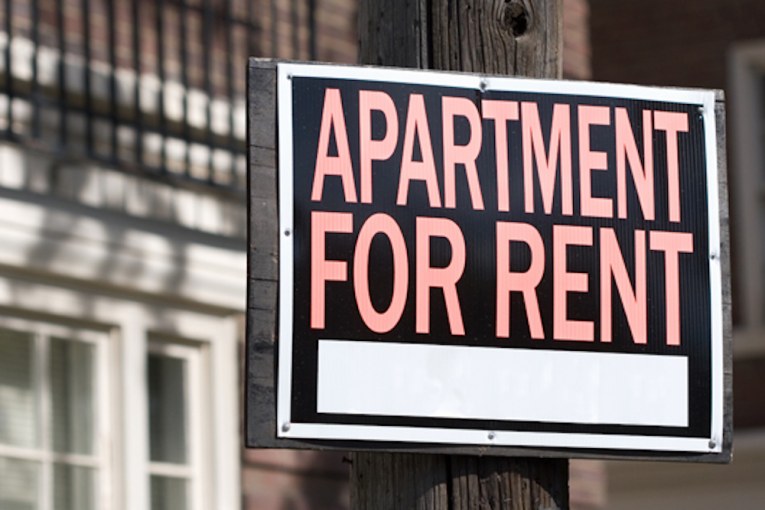

By Julia Ann Easley
While the city of Davis rental market remains tight, a few more apartments are vacant compared to last year, according to a survey commissioned by Student Housing and Dining Services at UC Davis and released today (Feb. 5).
The blended vacancy rate — including apartments leased by the unit and by the bed — is estimated to be 1.0 percent, compared with 0.5 percent in fall 2018. Rents increased by an average of 5.5 percent.
Vacancy rates
The report on the 44th vacancy- and rental-rate survey, designed to provide the campus and surrounding communities with information to support planning, comes as UC Davis is constructing more  student housing on campus and addressing the issue of the affordability of student housing more broadly.
student housing on campus and addressing the issue of the affordability of student housing more broadly.
According to the fall survey, 40 apartments, or 0.6 percent, of 7,207 leased by unit were vacant, compared with 0.4 percent vacant last year.
Among the 1,266 units leased by the bed rather than the unit as a whole, 141, or 3.4 percent, of the 4,194 beds were vacant. Last year, 0.7 percent of beds in this type of unit were vacant.
Rental rates
Most survey respondents reported static or increasing rents. The average monthly rent for unit-leased apartments of all sizes was up 4.7 percent, from $1,815 last year to $1,901. The average monthly rental rate for a bed lease was up 5.1 percent, from $954 in fall 2018 to $1,003. The blended rental rate increase of 5.5 percent is higher because it factors in the sharing of some rooms in those units leased by the bed.
The survey also reports on the provision of utilities, appliances, amenities and parking.
A total of 122 apartment complexes and property management companies representing 9,007 rental units responded to the survey. The report’s calculations exclude units rented at below-market rates; only the 8,475 market-rate units were included.
Student housing projects
UC Davis, which guarantees housing to new freshman and transfer students for their first and second years, is in the midst of its most ambitious period of planning and construction for additional student housing.
The campus now accommodates about 10,500 students. Based on a 2018 memorandum of understanding with the city of Davis and Yolo County, the campus plans to grow the number of on-campus beds available to students. Using the Long Range Development Plan (LRDP) baseline of about 9,800 beds in 2016-17, it anticipates increasing on-campus housing to more than 15,000 beds by fall 2023.
The campus, city and Yolo County are working together to improve housing. In the fall, the community issued its first Joint Annual Housing Report. It outlines recently completed, ongoing and future housing developments on campus and in the city.
Among campus projects:
- Fall 2019 — The campus opened the 400-bed Yosemite Hall in September.
- Winter 2020 — In January, it opened the new Latitude dining facility in the Tercero Area, which will allow for future growth and greater flexibility in bed configuration.
- Fall 2020 — The Green at West Village is on schedule to add 1,000 beds for transfer and continuing students.
- Fall 2021 — The Green at West Village is scheduled to provide an additional 2,300 beds.
- Fall 2021 — The Shasta Hall project is on track to open a year early with 800 residence hall beds for freshman students.
- Fall 2023 — Anticipated for fall 2023, the expanded Orchard Park redevelopment project will provide at least 200 two-bedroom units for students with families and housing for up to 1,200 graduate students.
- Through 2030 — Additional projects planned through 2030 include 2,870 student beds and 500 single- or multi-family homes for faculty and staff.
Affordability
The campus is implementing the recommendations of the task force on student housing affordability. Among its activities, the campus:
- continues to prioritize design and construction efficiency to achieve competitively affordable price points for new construction
- created a basic needs advocate position to liaise with property managers and help resolve student-landlord issues, and support housing and food security efforts on campus
- offers grants for housing assistance and basic needs to qualified students through its Aggie Compass Basic Needs Center
- started a hotel voucher program through Aggie Compass to provide five to 10 days emergency shelter to homeless students
- is working with city and county officials regarding strategies to reduce homelessness, including exploring partnerships for a rapid rehousing program
- plans to launch a homeless outreach program to count students living on the streets or in their cars and offer resources

>Vacancy Rate Rises to One Percent
o happy day . . .
Better than it was and it comes in advance of the thousands of beds that will be coming on line perhaps by September
Actually David we really don’t know that it is better than it was. The report clearly identifies three major reasons:
(1) There were only 122 apartment complexes reporting this year compared to 138 apartment complexes in 2018, 142 apartment complexes in 2017, and 143apartment complexes in 2016. The 9,007 Beds reporting was down from 10,188 reporting in 2018, 9,969 reporting in 2017, and 9,905 reporting in 2018.
(2) “The comparatively high vacancy rate among one-bedroom units is driven by vacancies at a small number of properties that have recently undergone renovations, where units were not available until after the fall lease-up period.”
(3) In the Bed Leases section “The increase in the vacancy rate is largely due to vacancies at a small number of properties, where units were not available until after the typical fall lease-up period.”
A good start.
Other than Yosemite Hall (mentioned in the article), there doesn’t appear to be any increased (ready-for-occupancy) “supply” that would directly account for this change – despite increased enrollments.